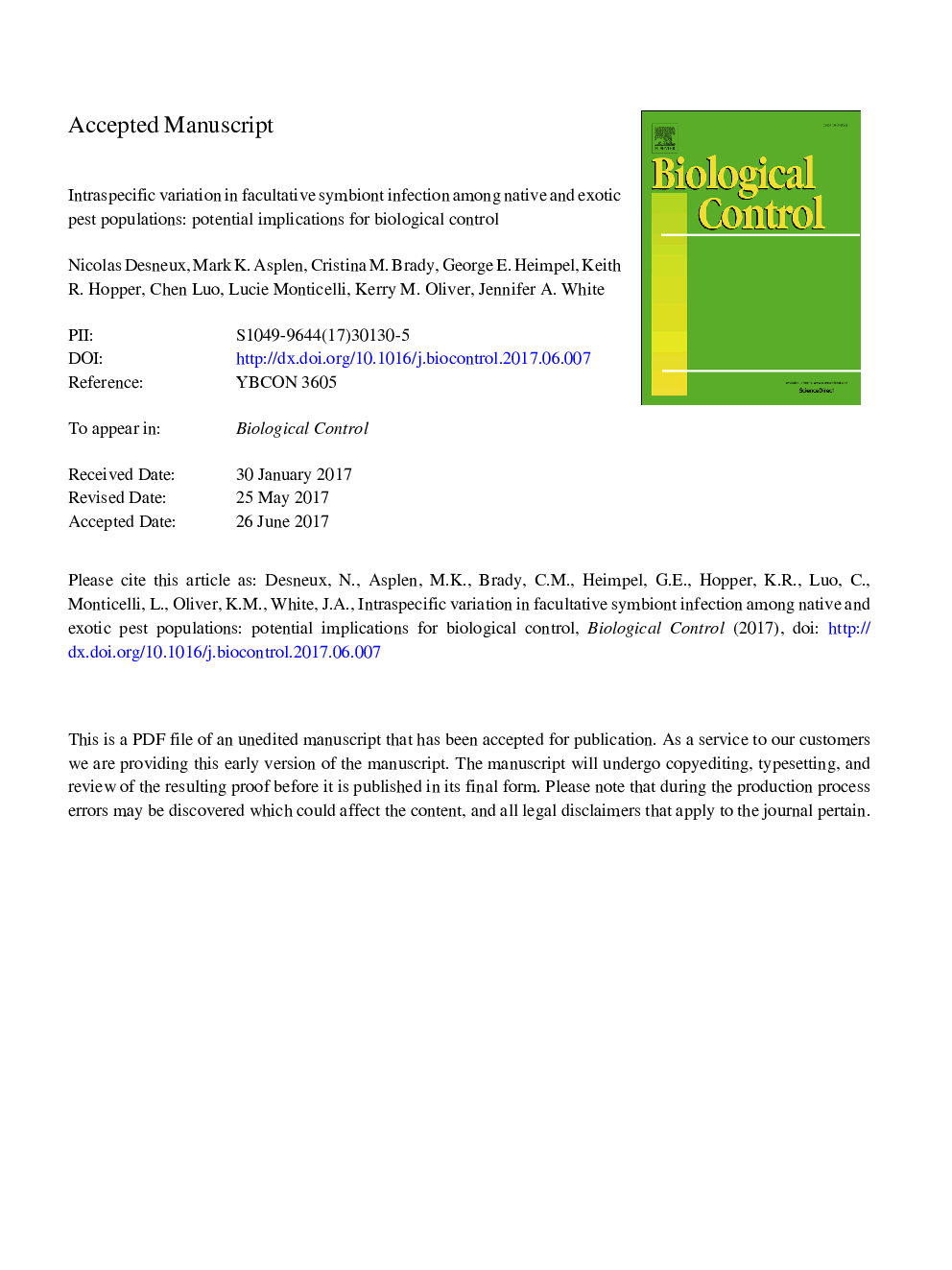| Article ID | Journal | Published Year | Pages | File Type |
|---|---|---|---|---|
| 8877780 | Biological Control | 2018 | 33 Pages |
Abstract
Facultative bacterial symbionts can provide their host insects with protection from natural enemies. These symbionts are often found at low to intermediate frequencies among hosts in native populations, suggesting that fewer symbiont taxa (and their corresponding defensive properties) may be present in exotic populations, due to founder effects and drift in newly established populations. We tested this hypothesis by collecting aphid species from their exotic and native regions, and conducting diagnostic surveys for four facultative symbionts: Hamiltonella defensa, Regiella insecticola, Serratia symbiotica, and Arsenophonus nasoniae. We did not find fewer symbiont taxa in exotic host populations, but did find substantial intra- and interpopulation variation in symbiont infection. When we incorporated additional records from the literature, we found moderate support for the hypothesis, although few aphid species were sampled sufficiently to be conclusive. Finally, we tested whether laboratory colonies are prone to losing symbiont infection over time. We established four colonies of the cowpea aphid, Aphis craccivora, each initiated with a single aphid clone infected with H. defensa. Through repeated sampling, we found that all four colonies became uninfected over the course of one year. We suggest that symbiont surveys could aid importation biological control introductions by (1) establishing whether recently established exotic pest populations might have reduced symbiont complements and be particularly vulnerable to natural enemies, (2) providing clues on pest provenance, and (3) determining which native pest populations include the same defensive symbionts as the exotic target populations, as these may be the best sources for prospective agents. We also suggest that laboratory cultures of target and nontarget organisms be routinely monitored for symbiont composition, to ensure that laboratory trials produce field-relevant results.
Related Topics
Life Sciences
Agricultural and Biological Sciences
Agronomy and Crop Science
Authors
Nicolas Desneux, Mark K. Asplen, Cristina M. Brady, George E. Heimpel, Keith R. Hopper, Chen Luo, Lucie Monticelli, Kerry M. Oliver, Jennifer A. White,
